Central Nucleation in Muscle Fibers
Defining the Muscle Boundary
At low magnification, the boundary of the muscle is traced using the irregular ROI (region of interest) tool. This allows BIOQUANT to count only myofibers within the muscle when working at higher magnification.
Automatic Nuclei Detection
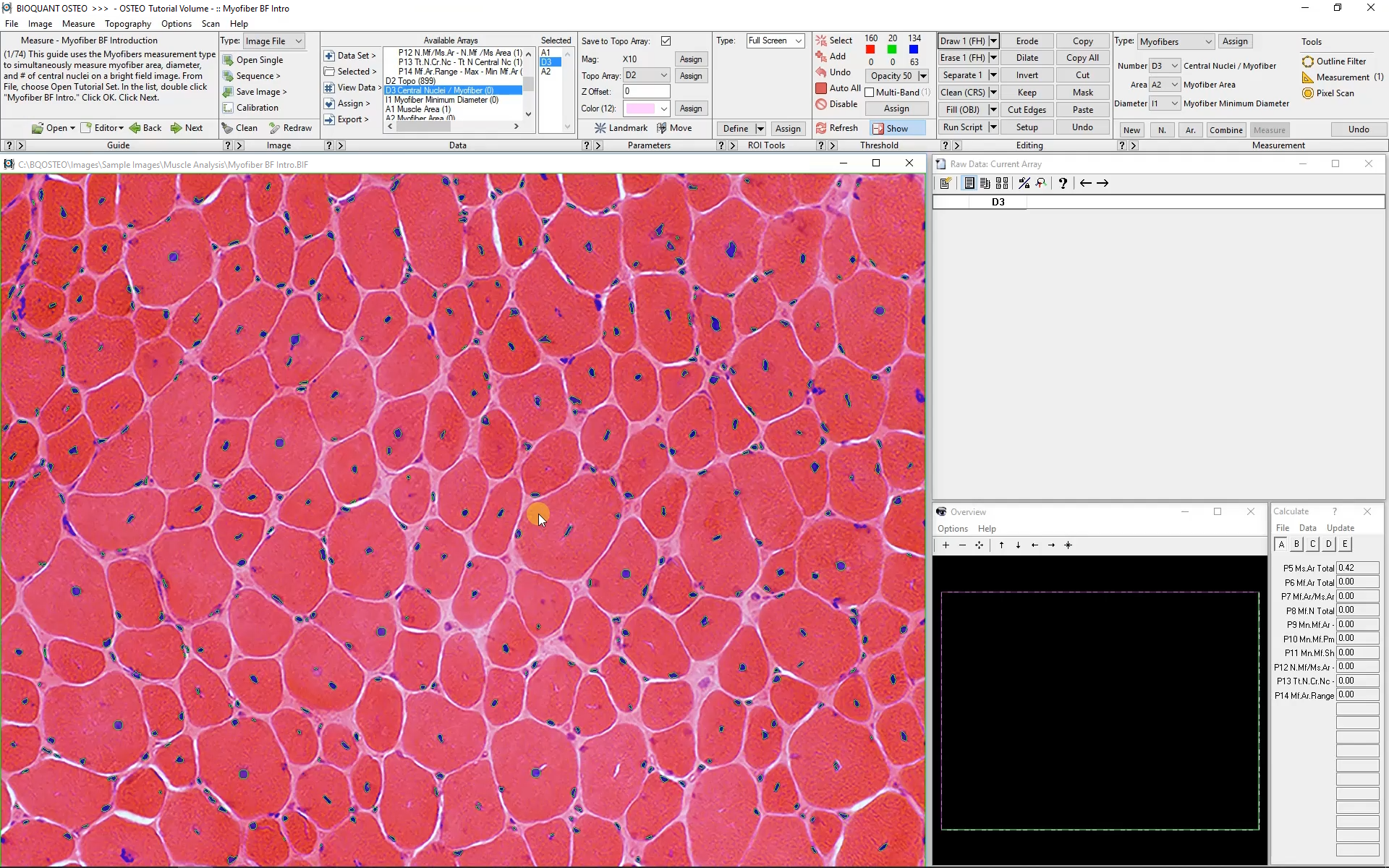

The counterstained nuclei appear purple. They can automatically threshold, with some manual editing. BIOQUANT will automatically reject any nuclei not centrally located.
Automatic Myofiber Detection
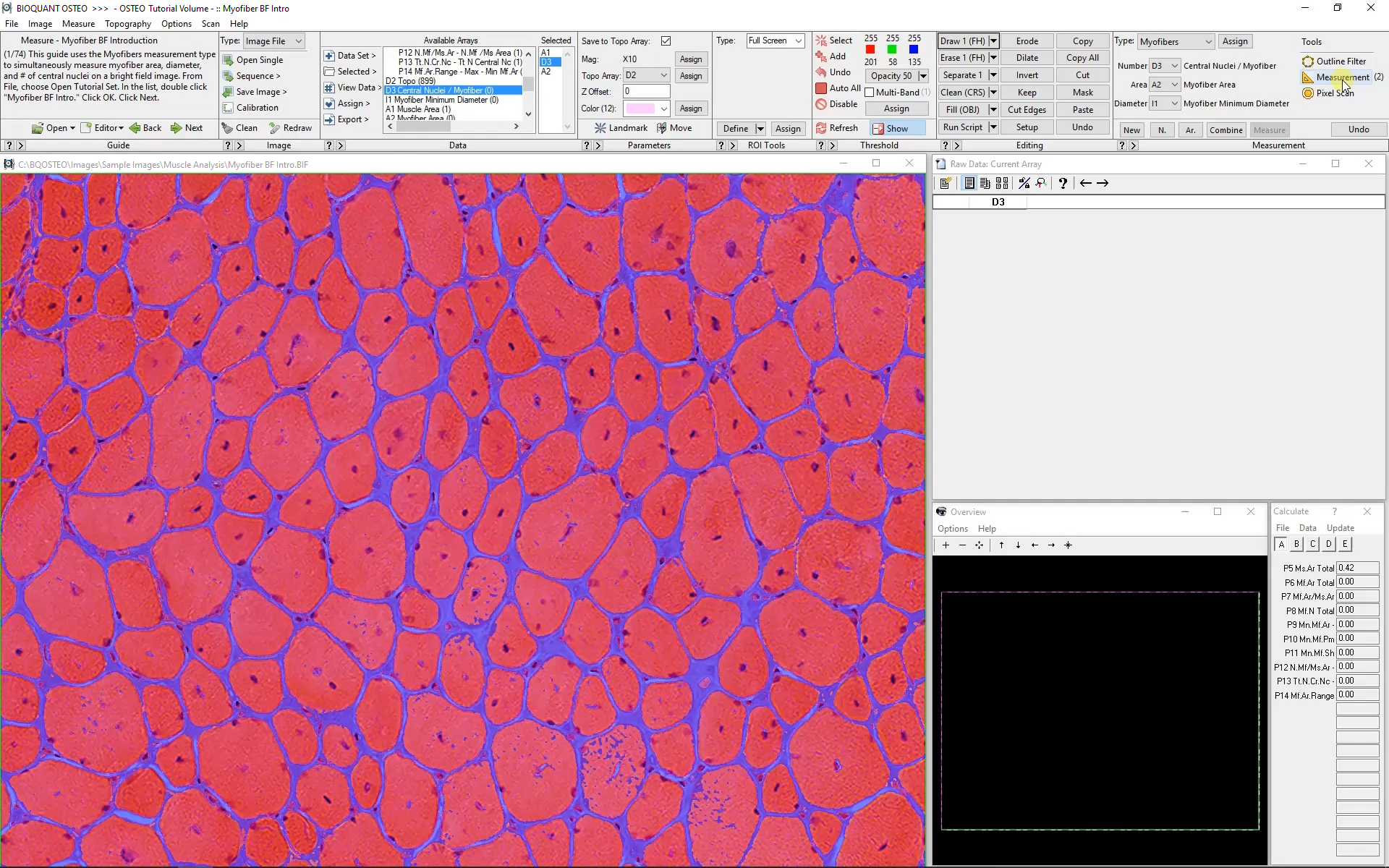
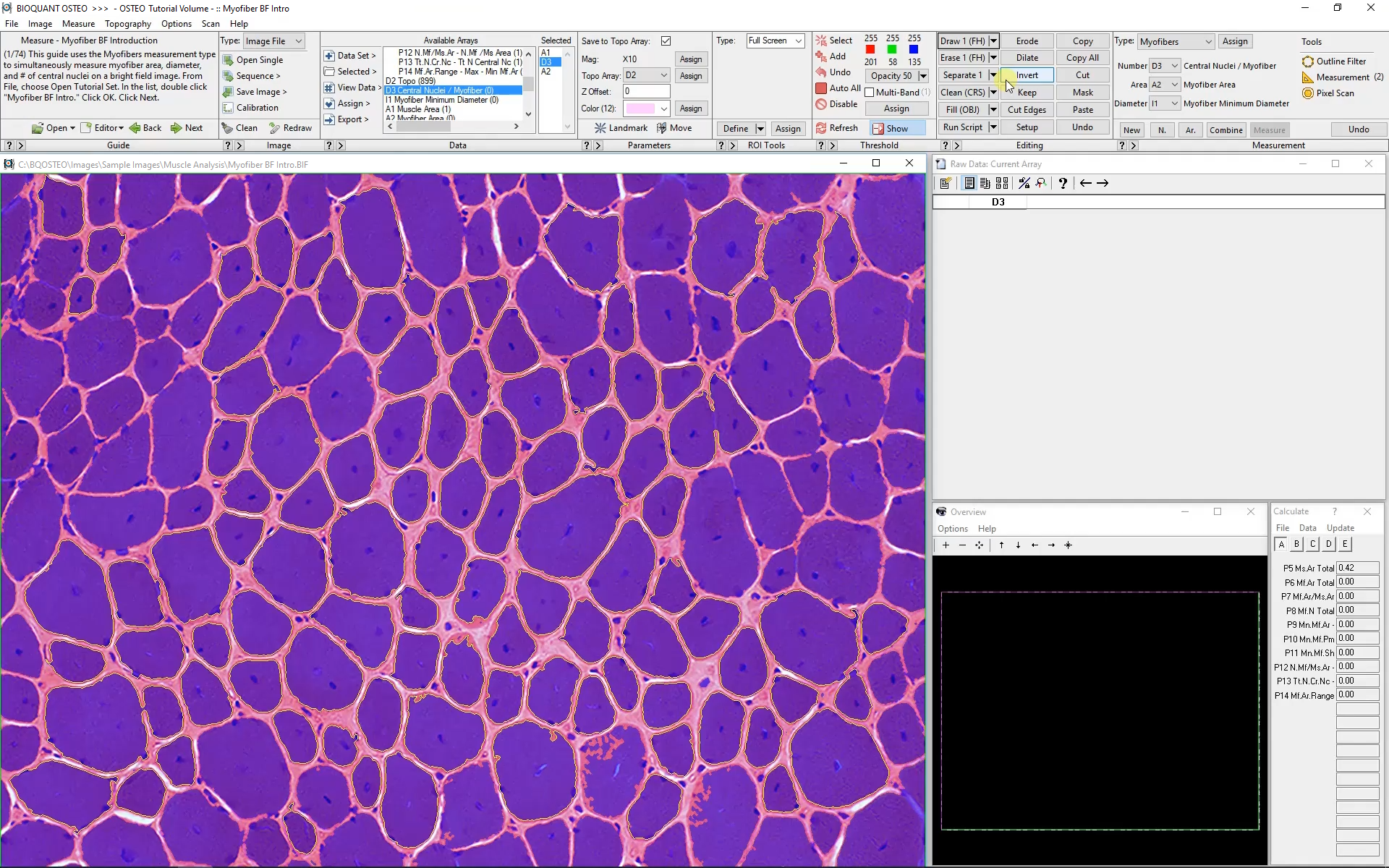
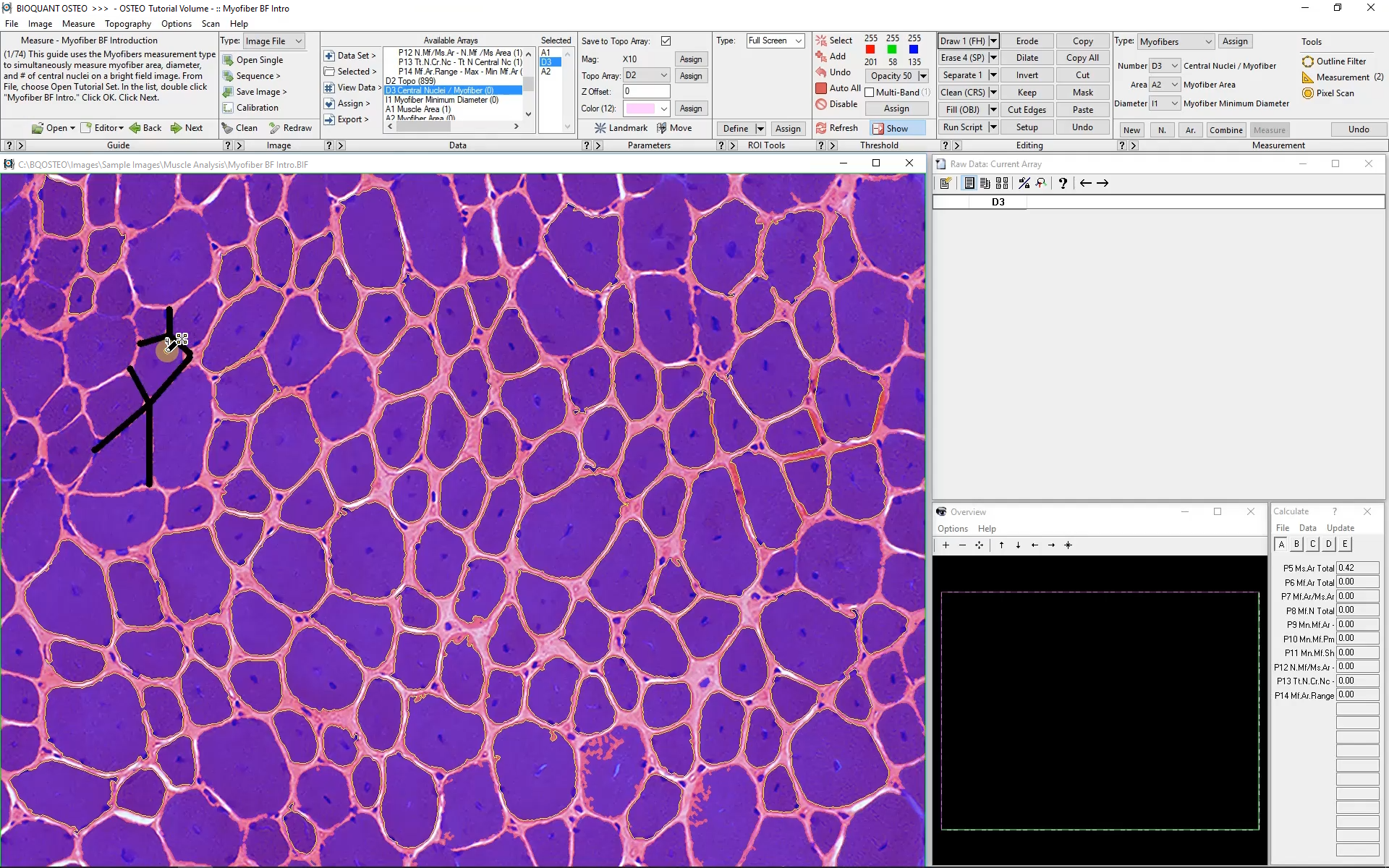
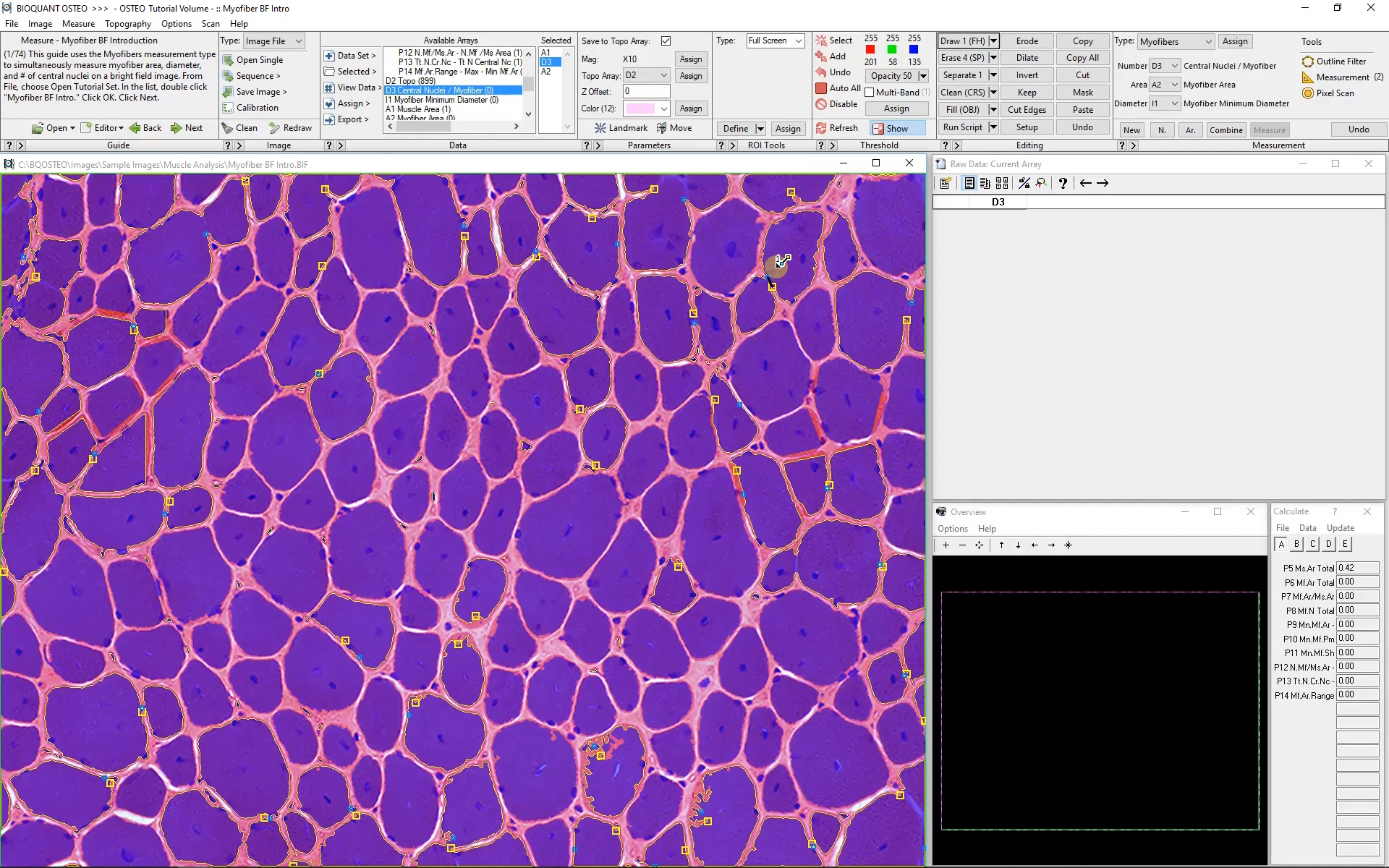
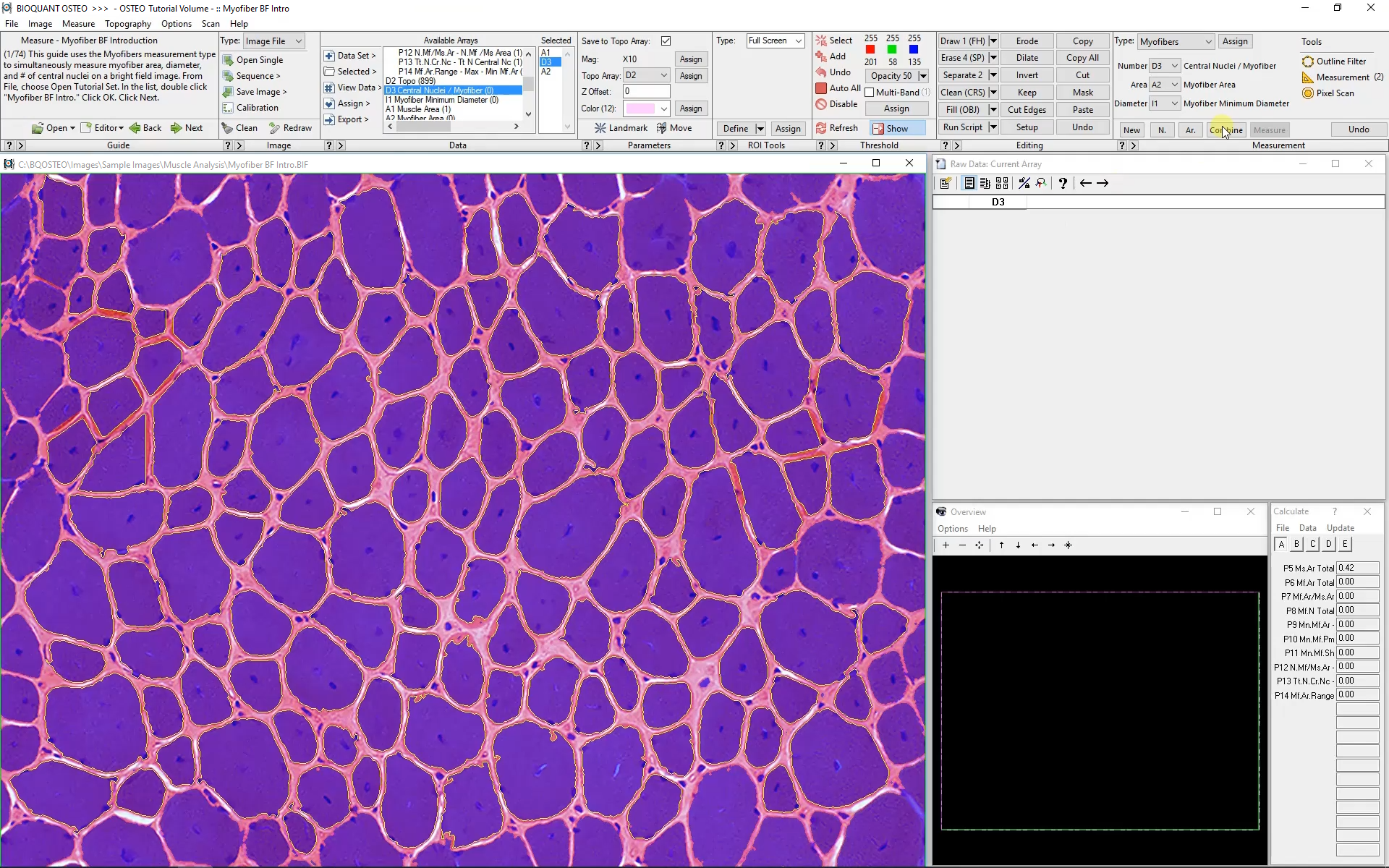
Automated analysis of myofibers depends on a high-contrast label applied to the boundary of each myofiber. Generally this requires a label specific to dystrophin or laminin.
Automatic color thresholding uses this boundary stain to identify the myofibers. Manual editing with a brush and eraser makes it simple to correct mistakes.
Intelligent filters remove previously measured myofibers and myofibers that are not entirely visible within the field of view.
Measuring Myofibers
Click image to enlarge.
BIOQUANT simultaneously collects the following data from each myofiber:
Myofiber Cross-sectional Area
Myofiber Shortest Diameter
Myofiber Perimeter
Myofiber Location
Myofiber Circularity
Number of Myofibers
Number of Central Nuclei per Myofiber
It's not possible to determine fibertype from H&E stained tissues.
Subsequent Fields of View
The Large Image Navigator in BIOQUANT makes it simple to move sequentially through a large section in consecutive, overlapping fields of view. BIOQUANT automatically tracks the boundary of the muscle and skips fields of view which are outside the muscle boundary.

